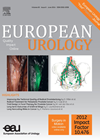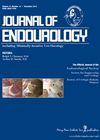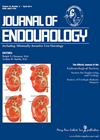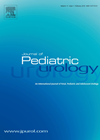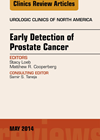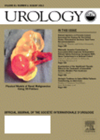
Journal Reviews archive for 2014
Model to predict malignancy among Bosniak III cysts
This retrospective study over a 15-year period is to identify independent predictors of malignancy in Bosniak III (BIII) renal lesions and to build a prediction model based on identifiable clinical variables. These cysts, characterised by contrast-enhanced computed tomography (CECT), have...
Does one-year decline in eGFR after radical nephrectomy and in matched living donors match?
In the May issue of BJUI Miki N Hew et al. discuss differences in renal function evolution between patients with renal cell carcinoma (RCC) submitted to radical nephrectomy (RN) and living kidney donors matched for age and gender. They also...
Retropubic versus transobturator mid-urethral slings for stress incontinence
Mid-urethral slings are commonly used in the surgical management of stress urinary incontinence. This multicentre, randomised trial aimed to compare the safety and efficacy of the retropubic tension-free vaginal tape (TVT) with the transobturator tension-free vaginal tape (TVT-O) in a...
RCC recurrence rates post laparascopic partial nephrectomy
In recent years laparascopic partial nephrectomy (LPN) has emerged as an oncologically safe alternative to its radical nephrectomy counterpart. There is however a lack of consensus amongst the urology community regarding surveillance after LPN for patients with stage I tumours....
Robot assisted laparoscopic prostatectomy versus open retropubic prostatectomy – complication and readmission rates
Readmission rates in postoperative patients are an important health economic and clinical challenge faced in the modern NHS, with financial levies attached. In America since 2013, hospitals have been faced with ‘readmission penalties’ deducted from Medicare reimbursements. This was the...
Percutaneous ultrasound guided endoscopic lavage of perinephric abscess – different, but not necessarily better
Perinephric abscess is an uncommon but serious form of urosepsis. It develops as a consequence of the extension of an infection outside of the parenchyma of the kidney in acute pyelonephritis, or more rarely from haematogeneous spread of an infection...
Priapism in children
I have to state a conflict of interest here for obvious reasons, being one of the authors. This paper reviews the English literature between 1980 and 2013 and summarises the clinical classification, aetiology, physiology and pathophysiology of paediatric priapism –...
Surgical management of DSD
The management of children with disorders of sex development (DSD) continues to be controversial. This editorial was written in response to a review article in the same edition on ‘Evidence regarding cosmetic and medically unnecessary surgery in infants’ by M...
Beta 3 receptors in OAB
More and more is written on Beta 3 receptors in human bladders and their role in detrusor relaxation. This study from Japan investigated human Beta 3 AR gene which is polymorphic. One hundred women with overactive bladder (OAB) and 101...
Update on urodynamic equipment performance
This article is from the steering committee of the International Continence Society (ICS) and it gives a comprehensive account of what is required from modern urodynamic machines. It will be of interest to purchasers, designers and clinical users (doctors and...
Increasing PSA after negative prostate biopsy - solving the clinical puzzle
There are standard guidelines for first transrectal ultrasonography (TRUS) guided biopsy in a patient presenting with elevated prostate-specific antigen (PSA) or suspicious digital rectal examination (DRE) findings. Patients are generally warned before a TRUS biopsy in respect of a false...
Prostatic artery embolisation – an option for select BPO patients
Few proponents of prostatic artery embolisation (PAE) regard it as a potential standard in future for benign prostatic obstruction (BPO) / benign prostatic hyperplasia (BPH) treatment. Present guidelines from the National Institute for Health & Care Excellence (NICE) and the...



